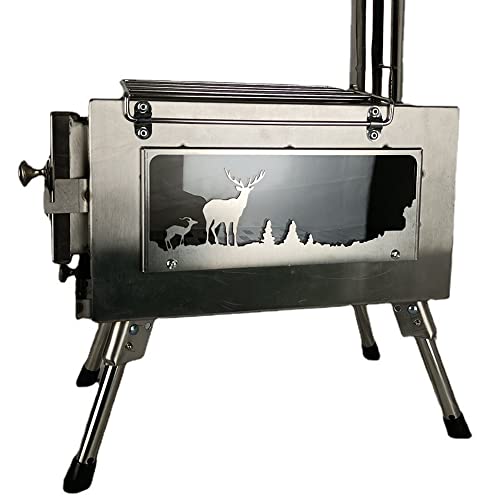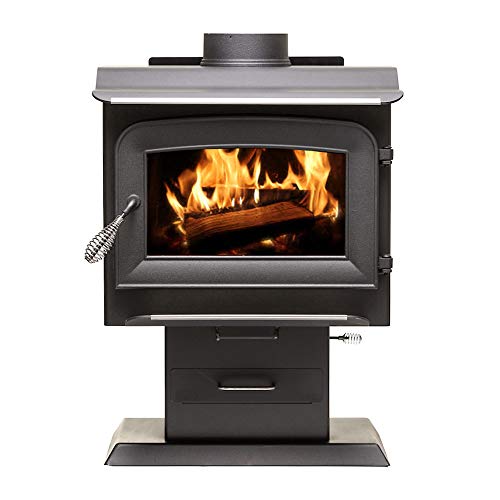Why Woodburning Stove Is Quickly Becoming The Hot Trend Of 2023
페이지 정보
작성자 Glinda 작성일24-11-01 09:08 조회2회 댓글0건본문
 How to Properly Operate a Woodburning Stove
How to Properly Operate a Woodburning StoveWood stoves are a fantastic way to heat your home. They're also affordable. However, the smoke they release can also be harmful to health. It's important to understand how these appliances work and how they operate.
 Modern stoves employ secondary or catalytic combustion to control emissions. However, older stoves and open fires produce large wood burning stove for sale amounts of particulates.
Modern stoves employ secondary or catalytic combustion to control emissions. However, older stoves and open fires produce large wood burning stove for sale amounts of particulates.The firebox
The firebox is the heart of any fireplace system. It's where you create a fire to heat your home and provide ambiance. It's a simple concept, but there are many important details that must be accounted for to keep your wood burning stove safe and efficient.
The firebox is described as a combustion chamber with walls and an enclosure. Most fireplaces have either a prefabricated metal or the masonry fireboxes. The type of firebox you choose will depend on your preference as well as the type of fireplace that you have.
The majority of wood-burning stoves employ a constant flow of air to produce the flame and burn the fuel. Fresh air is introduced into the stove through dampers that can be adjusted within the doors. This lets the fuel be properly burned and also helps reduce the toxic gases produced by incomplete or unburnt combustion. The exhaust gases will then be dragged through the chimney and away from your home.
contemporary modern wood burning stove stoves that have catalytic secondary combustion employ a special catalyst that reburns the unburned gasses to create additional heat. This creates a cleaner and less polluting smoke than traditional wood stoves with no secondary combustion. Modern wood stoves that are not catalytic are available however they are generally less efficient than stoves with secondary combustion that is catalytic.
Some fireplaces with wood burning have a backboiler, which can be used for space heating and water heating. They are known as "combination" or "hybrid" stoves and have been in use since the beginning of the 20th century.
Wood burning stoves can only be operated with seasoned wood. Freshly cut wood (green) has an excessive amount of water. This can result in low flue temperatures, and excessive creosote accumulation within the chimney. This can lead to chimney fires that cause damage to the stove, and they can even be dangerous to your family's health.
If you're in search of an expert who can examine your wood-burning stove or do repairs to your firebox, make sure that the chimney technician you choose is certified by CSIA certification and has reviews from customers on their website. Ask about their pricing and the type of work they can perform.
The pipe that allows for ventilation
Ventilation is a must for wood stoves to help eliminate fumes and keep the home healthy and warm. Ventilation is required to remove carbon monoxide and nitrogen dioxide from the combustion process. It also helps reduce air pollution and heat loss outside. Wood, gas and pellet stoves all have distinct requirements for venting. It is essential to maintain the stove's venting systems on an an annual basis for security and efficiency.
The ventilation system consists of the firebox and the ventilation pipe. The chimney and the ventilation pipe are used together to create a draft that draws smoke from the stove through the fireplace. Draft is created through the variation in temperature and density between hot wood smoke and cold air outside. The higher the temperature, the more smoke can rise through the vent pipe and chimney.
The majority of modern wood burning stove for sale stoves are EPA-certified low-emission units. They produce less pollution than older models, which contribute to global warming and other environmental problems. Most newer stoves also come with pollution controls built-in to reduce the amount of carbon dioxide they emit while ensuring that the emissions are burned efficiently.
Older stoves that have open flues create lots of carbon dioxide, which is an extremely poisonous gas and should not be allowed to escape into your home. Carbon monoxide can be a source when your chimney is dirty or has inadequate ventilation. Installing carbon monoxide alarms inside your home is therefore essential.
Measure the distance between the opening of the chimney in the ceiling or wall and the spot where the wood stove is located on the floor. By multiplying this measurement by 2 will give you the shortest length of stovepipe you require. You can choose to use single-wall or double-wall stovepipes and ensure that you have adequate clearance from combustibles.
The vents for the stove's air should be adjusted when it first starts to light up, until a good flame is created within the stove and its combustion process has stabilized. It is also a good idea to avoid using briquettes of Top wood burning stoves in the stove, because they are not logs, and may contain volatile chemicals that can cause the air vent to malfunction and cause a hazardous situation.
The chimney
The chimney is a complicated system that requires careful care. The chimney is made up of a variety of components that are essential to the safe and efficient operation of your stove.
The wood burning stove's combustion gases are emitted to the outside through the firebox, the vent pipe, and the chimney. This is essential to lower carbon dioxide levels as well as prevent harmful emissions. To accomplish this, the flue and chimney should be hot enough to move the gases from the fireplace without cooling. This can be achieved by using a wood-burning stove which produces a large amount of heat and by adding new logs on a regular basis to the fire.
Modern woodburning stoves are taller chimney than older systems to increase the effect of drafting. However, this could be a disadvantage when the height of your chimney is higher than the maximum permitted for your area. In this case the chimney may compete with the stack of your house for airflow, causing gases to cool down before leaving. This can result in a decrease in the flow of gas and an accumulation of creosote.
The most common mistake homeowners make is to open the fireplace door and close it too often. This can adversely affect combustion. It is important to keep the door of your fireplace as shut as you can and only open it when you need to add ash or firewood. Keeping the door open too long allows hot air to escape from the stove, causing the logs to cool and harder to light. It also releases unburned volatile compounds into the room.
Another common error that people make is to use different kinds of combustibles inside their woodburning stove, which could cause higher emissions, or even a chimney fire. The truth is that woodburning stoves were designed and optimised to burn firewood and not other types of combustibles.
The flu
A woodburning stove needs a correctly sized flue to allow for proper air flow and draft development. Typically, the dimensions of the flue must be at 25 percent greater than the stove pipe (which connects the stove to the chimney) to provide enough space for smoke passage. In addition, a wood stove must be placed on a hearth constructed of non-combustible materials and has a clear, unobstructed area in front of the fireplace opening.
Modern stoves are equipped with catalytic combustion systems that reduces the amount harmful byproducts that are released into the chimney. This feature is also able to increase the efficiency of a wood stove by burning a fire that generates more heat and emits less. Making use of other types of combustibles than firewood, however, could cause issues like lower efficiency and more emission levels.
It is crucial to use seasoned or dry wood when you are burning wood in your stove or fireplace. If your wood isn't seasoned or dried, it could release a lot of water vapor into your chimney. This can result in low flue temperatures, and even a fire in the chimney.
Another way to prevent the possibility of a chimney fire is to have a professional inspect and clean your flue system regularly. This includes the stovepipe, the chimney, and the chimney itself.
A unclean stove and flue system could result in a poor chimney draft which can produce carbon monoxide in your home. This can be dangerous to your family members and you should never allow it to happen.
A good guideline is to hire an experienced chimney sweep clean your chimney and stove every year. This will help keep the stove and chimney functioning efficiently.
댓글목록
등록된 댓글이 없습니다.







